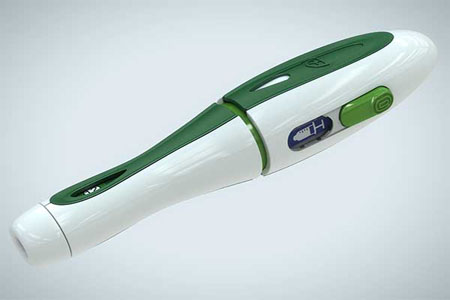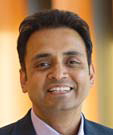Escalating Opportunities, Challenges In Drug Delivery Via Device
By Doug Roe, Chief Editor
 Everyone is enamored with biologics these days. With the potential to address many unmet medical needs, it’s no surprise analyst firm EvaluatePharma is projecting biologics to represent 50 percent of the world’s top-selling drugs by 2020. But what a lot of people overlook is that in addition to already arduous development and formulation processes, biologics require a vehicle to deliver those therapies. While biologics are not the only drugs to be delivered via device, their rise in the life sciences industry does focus attention on a broader issue — the convergence of the drug and medtech industries. And with that convergence come many challenges, some of them unexpected.
Everyone is enamored with biologics these days. With the potential to address many unmet medical needs, it’s no surprise analyst firm EvaluatePharma is projecting biologics to represent 50 percent of the world’s top-selling drugs by 2020. But what a lot of people overlook is that in addition to already arduous development and formulation processes, biologics require a vehicle to deliver those therapies. While biologics are not the only drugs to be delivered via device, their rise in the life sciences industry does focus attention on a broader issue — the convergence of the drug and medtech industries. And with that convergence come many challenges, some of them unexpected.
The following are five key drivers for a successful combination-product strategy:
- Regulatory
Navigating two different regulatory landscapes, one for drug and one for device, is the current reality. The FDA’s Center for Drug Evaluation and Research (governing drugs) and the Center for Device and Radiological Health (governing devices) have different and often conflicting guidance. Identify which regulations apply as early in development as possible. - Reimbursement
The Affordable Care Act (ACA) has mandated “increased value” as a determination for reimbursement eligibility. The days of the next “me-too” drug are gone. Leverage the features and benefits of a delivery device to outperform some of these concerns. - Patient Compliance
An evolving and empowered patient makes adherence and compliance an ever-moving target. Delivery devices, engineered using human factors design, address needs for tech-savvy patients who have a growing expectation to review their data, understand their diagnosis, and choose their therapy. - New Treatments
Treatments requiring a large dose or a larger volume of a drug demand enhancements to delivery-device design. Proficiency in material and mechanical limitations will fast-track these improvements. Diseases with extreme targeted-delivery needs will necessitate new device innovation. Understanding or overseeing device development timelines can ensure final combination product speed-to-market. - mHealth
mHealth and the so-called Internet of Things (IoT) change the future stakeholders in diagnostics, prescription, delivery, and data capture. Who owns, views, uses, and governs the data is still undefined. The IoT creates additional dependence on layers of connected health devices and equipment, as well as the systems to manage it all. The migration from the clinical setting to home health requires a change in the overall approach to a drug company’s IT infrastructure, allowing it to operate in this new environment.
These drivers are not project milestone hurdles, but product development considerations. To be a leader in the biologics future may require a change in company culture. The common drug development process can lead to shortcomings when a delivery device is sourced only after drug completion. Even in progressive drug companies that are now designing proprietary devices, the drug and device groups typically are siloed until the drug is in the final stages of development. This historical afterthought approach will not achieve the most effective product outcomes. Early integration of delivery device expertise and methodologies — to create a true combination-product team — will emerge as a best practice in companies that succeed.
I sat down with a group of industry experts to discuss a variety of issues regarding combination devices and how they will affect drug delivery via device in 2016 and beyond.
What therapeutic areas related to drugs administered via a delivery device will represent the biggest opportunities in 2016-17?
 David Amor,
David Amor,
Managing Partner, MEDgineering
With the FDA approving Afrezza — an inhaled form of insulin — in October, it is a sure bet that similar options will emerge in 2016 and beyond for diabetes management.
Neil Cammish,
Technical Director, International Device Solutions
Areas related to drugs that are difficult to deliver manually. They fall into two general categories: long-acting release therapies and viscous drug products. For these reasons, rheumatoid arthritis and type 2 diabetes have the biggest opportunities in the short- to midterm. Of course, this will be exacerbated by any related patent expiry.
 Chris Eustace,
Chris Eustace,
VP Quality Device Operations, Hospira
On the oncological side, dealing with cancer, one area will be targeted therapies (acting inside the cell), as opposed to more general treatment (acting on the cell or outside the cell). I think the findings are showing that new advancements in targeted therapies, like signal transduction inhibitors, are actually becoming more effective than conventional chemotherapy. I am not sure about next year. It might be a little further out in 2017. But any time you can go directly at the area that is affected, it is a much cleaner application than whole-body therapy.
 Olaf Queckenberg,
Olaf Queckenberg,
Head of Global Chemical and Pharmaceutical Development, Bayer Pharma AG
Therapeutic areas with a high share of biologics, like oncology, immunology, hematology, neurology, ophthalmology, and diabetes (insulin) are likely to see the biggest increase. Some of these therapeutic areas require chronic treatments where patient adherence is key. Reduced dosing frequency, patient self-administration, and improved convenience are important aspects in development, which can be addressed by innovative formulations and delivery devices.
 Anand Subramony,
Anand Subramony,
VP Drug Delivery & Device Development, MedImmune
Clearly rheumatology and other inflammation diseases. Asthma is an area where there is going to be tremendous value created by device delivery features that make a big impact on patient-centricity. Another area is lupus, which is going to have some novel devices come into play.
Which drug delivery device platforms do you expect to have the most growth in 2016?
Amor: Inhalers are an area seeing significant disruption. Intranasal administration routes are gaining popularity. Drug manufacturers are trying to figure out how to use drugs with an inhaler platform for faster and more efficacious delivery.
Teva recently purchased Gecko Health, whose smart inhaler has a sensor that enables data analytics for chronic disease management on a mobile application. I expect that pharma will continue the acquisition trend of targeting mobile health products and technologies to enhance their current delivery device portfolios.
Cammish: There will also be large, mostly hidden, growth in device development for bolus and high-volume delivery mechanisms. This is mainly due to latency in the market and the start of second-generation me-too devices, which will add additional patient benefit and market advantage. Think of the smartphone leap from the functional entry-level Windows CE phone (in 2001) to the dynamic iPhone (in 2007) we know today.
Eustace: A bigger part of therapy will move toward transdermal drug delivery, things like the patch and advances in microneedles.
don’t think you are going to see much on the infusion side. With the current focus on cybersecurity, the regulation evaluations and the new requirements that will be defined are putting delays on product development. The “smart pump” is probably a few years away.
Queckenberg: Drug-delivery devices for injections will see the largest growth, along with smart auto-injectors with software functionalities that help patients to manage their disease and apps that offer the possibility to read data from the device, as well as enable patients to track their drug intake and facilitate the exchange of data with healthcare professionals. This will become the new norm.
Digital health solutions, such as medical software, smartphone apps, sensor technologies — alone or in combination with delivery devices — will be a fast-growing segment in all disease areas and application routes. They will help patients and physicians to better manage disease and to adjust medical interventions to the needs of the patient.
Subramony: We are going to see a lot of innovation in the prefilled syringe (PFS) space. We have some forms of PFS in the market now, but what I think we will see is more robust designs, improved safety mechanisms, and needle retraction.
Auto-injectors will continue to be a key product. Much of this is patient-centered, moving the treatment from hospitals to homes. It is all about providing the medication in the safest way, with minimum pain, and in a convenient fashion. There’s also a good chance we will see some large-volume autoinjectors and bolus injectors next year.
 Stephen Wilcox, Ph.D.,
Stephen Wilcox, Ph.D.,
Principal & Founder, Design Science
We are at the beginning of a revolution — the IoT — that is going to change everything. A simple example would be a sensor that is part of a connected device. It is recording and tracking behavior that is saved to a database. That data can serve many functions. Patients can access it to see how they are doing, physicians can access it to monitor adherence, and the system itself can evaluate the data and send a reminder to the patient to aid in compliance. Now, imagine many of these devices and databases all interconnected. With that volume of information about a patient, it transitions from just monitoring to diagnosing and, eventually, prescribing. With that system of connectivity, a physician could interpret and prescribe the appropriate medicine, which would then automatically be loaded into an infusion pump. Delivery platforms will become part of a larger system we call product service ecology.
What will be some of the key challenges facing companies that are expanding competencies into these delivery device platforms?
Amor: The key challenges are less about the technology itself and more about the integration of two distinct worlds — pharma and medical device. Quality and regulatory requirements in each industry are slightly different, and often the biggest challenges emerge when companies aren’t aware that the constituent products of a combination product are also governed slightly differently. Although the FDA’s cGMP rule for combo products (21 CFR Part 4) was released recently, companies are still struggling to apply it to their new drug-delivery submissions. Companies that are committed to drug-delivery device products must also invest in a robust regulatory/quality system that streamlines submissions and ensures compliance with new regulations and standards.
Cammish: There are challenges to multiple groups: R&D — Finding an unmet need related to the combination of drug and device. Legal — Not losing sight of intellectual property considerations. Human Resources — Sourcing experienced staff and expertise that have both technical and industry device experience. C-Suite Leadership — Trusting the device experts that you hire.
Eustace: Understanding and navigating through the regulations will be a key challenge. Regulation clarity is a big issue with the FDA, and that challenge expands as you consider your international markets and the corresponding regulatory bodies. Each is, at best, slightly different.
It may be a variation on the question, but leveraging your full company capabilities after a merger also is a challenge related to delivery via device. You have a new mix of drugs and delivery devices. Identify which ones offer the most effective, and potentially new, combinations. Often this is a driver for the merger, but taking time to evaluate your combined pipelines could lead to a major opportunity.
Subramony: Build vs. buy is a key debate that many companies go through regarding device development. Pharm/biotech often face the challenge of how much inhouse device development to undertake. Building internal delivery device platforms certainly can help address product readiness and time to market. However, several key competencies are required to grow in-device platform development. For instance, in addition to core mechanical engineering and design expertise, you also need human factor engineering expertise. Platform development is a cross-functional activity in which areas/ functions like drug substance and formulation must be considered early on. Understanding the regulatory landscape for combination product development throughout the platform development cycle is very important.
If you are vertically integrated, you can build the device capability as a core competency within your company. The insulin market is an example. The device drives your product differentiation, so you build the device strategy around it.
If you have differentiation in terms of efficacy or novel mechanism of action, a device could bring you additional “best in class“status through patient-centric features. Even for this scenario, it is best to integrate device development early on in product development.
Companies also need to understand how payers are going to view one delivery solution over the other. It has to be part of the overall product development strategy from Phase 1. No longer can you wake up before Phase 3 and find a solution.
Neil Cammish
Wilcox: Do pharma companies have the skills needed to manage/handle/address connected health considerations? System and software engineers will be a requirement. Also, database development and database management will take on a much greater importance, as companies begin to capture and analyze the large volumes of corresponding data being created.
How can drug companies drive innovation in delivery device design in 2016 and beyond?
Amor: Human factors engineering (HFE) ensures that adoption of novel delivery platforms will be successful. Users and caregivers in many therapeutic areas are used to a drug-based treatment regime; introducing a new “toy” that changes administration can be a scary proposition. Usability studies and HFE work should aim to allay these anxieties and understand use cases, not to mention the FDA is requesting HFE work in combo-product submissions. Out of the last four combo-product submissions I have directly worked on, three of them contained HFE questions in the first round of review.
Cammish: Install user-led design. Focus solely on delivery mechanisms and devices, without waiting for a molecule. Funding is typically top-down therapyled, with a direct market need and an aggressive timeline. There is a definite innovative benefit to stepping back and funding development outside of standard project constraints. Determine what patient populations require and work from the bottom up. The allocation of time and space for existing device-development teams, working only on innovation, is what would be required.
Eustace: The reason most companies struggle with innovation is because they don’t understand the differences — and potential similarities — between the two sides of the business (drug and device). They don’t talk to each other. There is a wall that is built up. Part of that wall is the distinct quality systems. Things are too different on each side. Installing one companywide quality system would bring the partners together early in the development cycle in order to coordinate the entire combination-product requirements. Then, you keep the teams together for the R&D process. Having them together will build a bridge between the differences and will lead to them discovering opportunities.
 Paul McKenzie, Ph.D.,
Paul McKenzie, Ph.D.,
Head of R&D, Ethicon
To provide the best possible device solutions for the patient, we have adopted an open approach with our device partners. By sharing our requirements freely with device developers, and de-emphasizing the need to control IP, we have been able to help promote the development of innovative designs.
Subramony: There is a lot of opportunity to advance patient compliance. Improving assurance (safety) and designing with a human factors approach should be main considerations. The goal should be to grow expertise in device design.
Don’t just rely on your internal expertise alone. Reach out to design companies and explore the whole idea of tech disruption. We work closely with such companies. Identify if you have the right experts in your organization and if you are building those unique competencies internally. Or, determine if you need to implement an external approach to have your people learn and grow.
Wilcox: Companies need to take a holistic approach to the patienttherapy life cycle and incorporate an understanding of all the interconnected products, software, and systems that will be involved. Then, innovation will come from how a solution can best be integrated.
 Rob Willenbucher, M.D.,
Rob Willenbucher, M.D.,
Head of Cell Therapy, Janssen R&D
Enhancing the experience for both patients and healthcare providers is a key driver for device innovation. We have broadened our approach to focus not only on the device but also how it is used and the human factors that may impact the entire procedure. These considerations include both the physical and cognitive workloads associated with using the device. We have demonstrated positive results applying both human factors and industrial design expertise to a cellbased therapeutic with a fit-for-purpose delivery system.
What are your market growth expectations for drugs delivered by device?
Cammish: There will be little growth in pen devices as therapies shift to longer-acting, modified-release drugs. It is not that the usability or utility of the pen injector will decline, but simply a reduction in its frequency of use.
Expect double-digit growth in autoinjectors and other devices capable of high-volume and/or viscous drug delivery. The majority of this growth will be linked to biologics. The core need is for patient convenience, coupled with the reduction of clinical care costs by facilitating home use.
Subramony: It is definitely going to be a market with tremendous growth, next year and beyond. Because of the growth in biologics, the research data is pointing toward device-based combination products overtaking oral as the prime delivery method.
